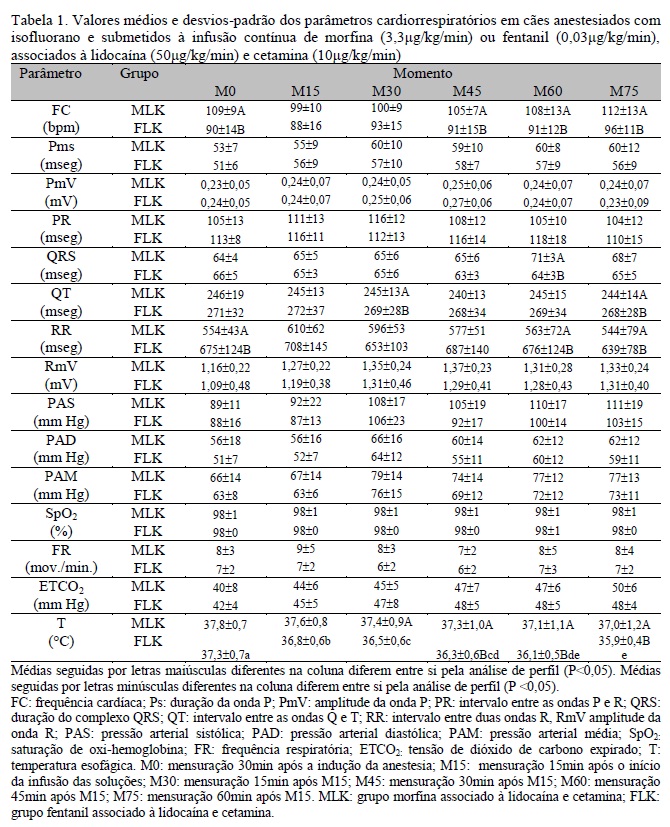The multimodal analgesia technique by continuous infusion of drugs can be used to decrease central sensitization during anesthesia. Cardiorespiratory parameters in isofluorane-anesthetized dogs during joint arthroscopy were evaluated. For this, 16 adult mongrel dogs were randomly divided into two groups, named MLK (morphine (3.3mg/kg/min), lidocaine (50μg/kg/min) and ketamine (10mg/kg/min)) or FLK (replacing morphine by fentanyl (0.03mg/kg/min). Levomepromazine (0.5mg/kg IV) was used as a preanesthetic medication, and propofol (5mg/kg IV) was used for induction and isoflurane was used for maintained general anesthesia, allowing the bispectral index to be maintained between 55 and 65. The measurements of heart rate (HR), eletrocardiographic, systolic (SAP), diastolic (DAP) and mean (MAP) arterial pressures, end-tidal carbon dioxide partial pressure (ETCO2), pulse oxygen saturation (SpO2) respiratory rate (RR) and esophageal temperature (T) were performed 30 minutes after induction (M0), and after the infusion of solutions, at 15 minute intervals (M15 to M75). Differences between groups were registered for the duration of the QRS complex (M60), for HR and T (from M30 to M75), with MLK recording a higher mean than FLK, which registered a lower value than MLK for SpO2 (M60), QT (M30 and M75) and RR (M0, M60 and M75) intervals. It was concluded that morphine or fentanyl, associated with lidocaine and ketamine, promotes similar effects and does not impair the parameters evaluated.
dog; bispectral index; FLK; MLK; opioids

